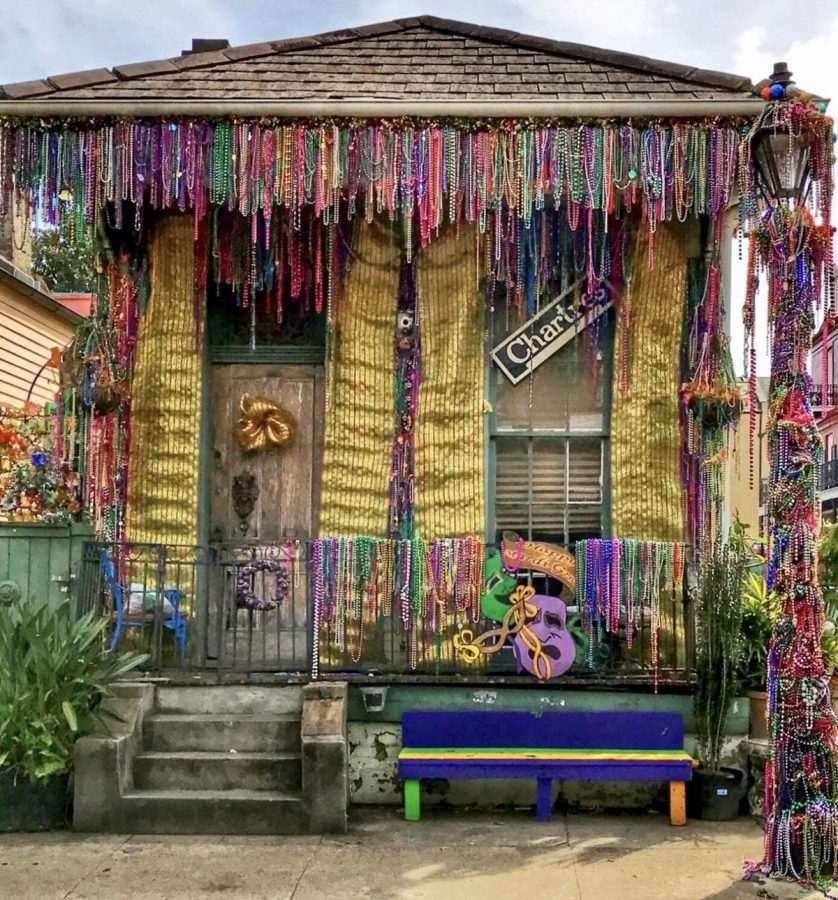Mardi Gras takes on new form for 2021
Photo by David Mora via Nola.com
One of the many homes decorated for Mardi Gras this year.
In New Orleans, Louisiana, Mardi Gras has always been an event to look forward to. Mardi Gras, also known as Fat Tuesday, is a celebration of the Christian feasts of the Epiphany. The tradition began back in 17th century Europe and became known as “Boeuf Gras” in France. In 1699, French explorer Jean Baptiste Le Moyne Sieur de Bienville carried the tradition to the Americas when he settled in Louisiana and named his settlement “Pointe du Mardi Gras” to recognize the holiday. When the time for Mardi Gras came around in late February, parades and balls with masked attendees and extravagant floats flooded the towns of Louisiana. From then on, Mardi Gras was recognized and celebrated in America.
Anticipated for all of its extravagant past events, this year’s celebration of Mardi Gras will look quite different. Due to COVID-19 trudging its way through 2020 and into 2021, partygoers must reevaluate their Mardi Gras plans. Social distancing rules and proper quarantining prevent the previously crowded streets and bars from overtaking New Orleans this year. This presents the issue of how Mardi Gras is supposed to be enjoyed and recognized this year.
Residents of Louisiana worked around these obstacles to be able to enjoy this beloved holiday. While parades and large gatherings were prohibited, people found creative ways to celebrate Mardi Gras in style. Owner of Courtyard Brewery in New Orleans, Scott Wood, was able to distribute festive beverages to those partying at home. Wood was also able to spread the joy by texting friends and family wishing them a happy Mardi Gras. Still not satisfied, he drove around the French Quarter playing festive jazz music for the few remaining pedestrians in the closed streets to hear.
As the spirit of Mardi Gras was still alive, residents in the area knew they had to continue the tradition of the magnificent floats that usually lined Bourbon Street. Neighborhoods began transforming into colorful places of excitement. The purple, gold, and green colors of Mardi Gras were flooded throughout the residential areas of NOLA. More than 3,000 homes turned their front lawns into standstill “floats” to keep the parade going. Onlookers were able to observe the frozen parade from a safe distance while still enjoying the tradition and culture of it all.
City Councilman Jay Banks stated, “Mardi Gras by no means is dead, it’s just different.” Many others were given hope and celebrated due to this statement and continued to keep their communities flourishing with Mardi Gras joy in expectation of the return of proper celebrations in the years to come.

